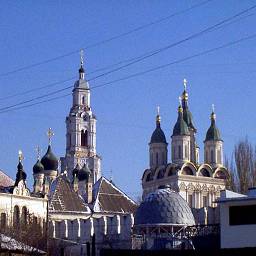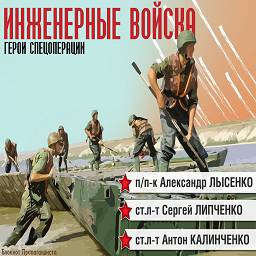Путь:
Quick Links
Language [ ENGLISH РУССКИЙ ]
New Materials
- Comprehending Viagra Soft Advantages, Drawbacks, and Application 2025-01-24
- Affordable Instagram Growth with InstagFollowers.shop Free Followers and Guaranteed Results 2024-12-18
- Buy instagram followers 2020-09-09
- FISCAL FEDERALISM THE CANADIAN EXPERIENCE 2020-03-22
- Analysis of differentiation of socio-economic development of the Russian regions 2020-03-22
- Economic development in the Russian regions institutional and macroeconomic problems 2020-03-22
- Russias North Economic Problems of Development 2020-03-22
- Problems of Fiscal Federalism in Russia 2020-03-22
- REGIONAL ASPECTS OF THE FEDERAL ECONOMIC POLICY 2020-03-22
- THE TELEVISIONS PROJECT 2020-03-22
- Journeys into History Through the Future 2020-03-22
- Artists Bring the Computer to Life 2020-03-22
- Culture in the Upcoming Millenium 2020-03-22
- What is a work of telecommunicative art 2020-03-22
- Tatiana Didenko Executive Producer 2020-03-22
Картинка недели
helpful
Категории
POST-APOCALYPTIC FICTION
Date of publication: 2017-10-06 15:18:24Дата модификации: 2017-10-06 15:19:20
Views: 2377
Author: Мета Гость
One classic theme in the sf of the late 1940s and 50s - one very obvious 'What if....?" - was 'What if there is nuclear war?" This clearly responded to the deep-seated worries of ordinary Americans and British, and the published fiction on this theme represents only a fraction of what was actually written. H L Gold, the editor of Galaxy, complained in 1952 that 'over 90% of stories submitted still nag away at atomic, hydrogen and bacteriological war, the post-atomic world, reversion to barbarism, mutant children killed because they have only ten toes and fingers instead of twelve....The temptation is strong to write: "Look, fellers, the end isn't here yet".'
Some of the most impressive contributions to the theme of the destruction of civilization in fact came from outside the sf field; George R Stewart's Earth Abides (1949), Neville Shute's On the Beach (1997), Alas, Babylon (1959) by Pat Frank, and Mordecai Roshwald's Level 7 (1959). The last three depict the actual events of nuclear war in horrifyingly plausible detail, two of them ending in the complete destruction of humanity, and Alas, Babylon, which describes the beginnings of the restoration of civilization, only some months after 'The Day', ends with the protagonist inuring himself to a thousand years of a new dark age.
It is significant that sf writers have often been more interested in speculating about how disaster might cause the slow breakdown of society, rather than its total elimination, and that they often choose, very naturally, other forms of destruction than nuclear bombs. One thinks of Stewart's Earth Abides, in which plague causes the collapse of civilization, or Wyndham's The Day of the Triffids (1951), John Christopher's The Death of Grass (1956), or the whole series of disaster novels written by J G Ballard in the early 1960s, beginning with The Wind from Nowhere (1962). Most professional sf writers spent more time looking at the dark ages, the post-holocaust world, than at the event of a nuclear holocaust itself.
Much more recently, in the so-called 'survivalist' novels of the 1980s, the holocaust has been seen as a useful cleansing exercise; according to them, only with the destruction of the corrupt Western world (in which far too much power has been given to feminists, homosexuals, liberals, and blacks) can the good honest values of the American Wild West be reborn. But in the 1950s, the post-holocaust novel was sometimes, much more interestingly, an evaluation of how societies decline into tribalism or barbarism (as in Earth Abides) or develop from barbarism to civilization. Walter M Miller's A Canticle for Leibowitz (1959) shows three stages. In the first, monastic communities endeavour to preserve something of the past (as in the real Dark Ages after the fall of the Roman Empire), although they drastically misunderstand it, making the few relics of a pre-holocaust engineer called Leibowitz the focal point of a religious cult. In the second, a scholar recognizes that some of these relics actually consist of scientific papers which could make possible the rebirth of a science-based civilization. And in the third, the bombs begin to fall once more. In Leigh Brackett's The Long Tomorrow (1955), two boys are oppressed by the obscurantist fundamentalism of the Mennonite (who better to survive the holocaust than those who live today without modern technology?), and dream of returning to the scientific wonders of the past, a dream which inspires them to leave their home and seek the home of these scientist, the mythical Bartorstown. Again, there are no simplistic answers, however; as one of the scientists says at the end, 'You're forgetting we're fanatics too.'
Other articles of the section: helpful
Previous EMPTYWORLDNextOPERATIONAL PLAN EDUCATIONAL PROGRAMMES AND TECHNOLOGIES






